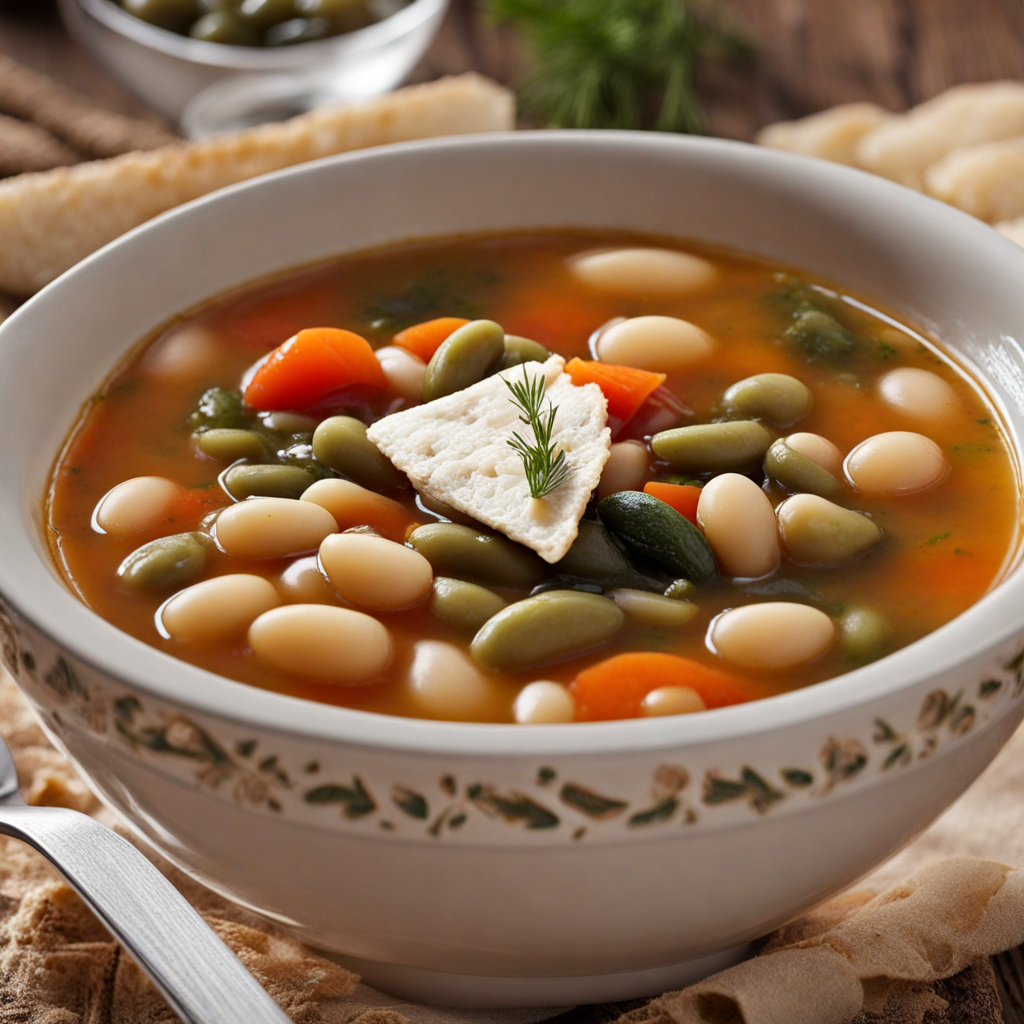Galatopita
Galatopita is a traditional Cypriot milk pie that beautifully embodies the rich culinary heritage of Cyprus. This delightful dessert is characterized by its creamy, custard-like filling made primarily from milk, sugar, and eggs, which is enveloped in a delicate pastry crust. The filling is often flavored with a hint of vanilla or citrus zest, providing a subtle yet refreshing aroma that complements the sweet notes of the pie. The contrast between the crispness of the pastry and the velvety smoothness of the filling creates a satisfying texture that is both indulgent and comforting. What sets Galatopita apart is its unique preparation method. The pie is typically baked until the top is golden brown and slightly caramelized, giving it an inviting appearance. Some variations may include a sprinkle of cinnamon or powdered sugar on top, adding a decorative touch and an extra layer of flavor. Traditionally served warm or at room temperature, this dessert is often enjoyed during festive occasions or family gatherings, making it a cherished part of Cypriot culture. Each bite of Galatopita offers a delightful taste experience that highlights the simplicity and quality of its ingredients. The sweetness is perfectly balanced, ensuring that it is not overwhelmingly sugary, while the creamy filling melts in your mouth, leaving a lasting impression. For those seeking to explore new flavors, Galatopita is a must-try, as it encapsulates the essence of Cypriot cuisine—simple, hearty, and deeply satisfying.
How It Became This Dish
The History of Γαλατόπιτα: A Culinary Treasure of Cyprus Origins and Early History Γαλατόπιτα, known as "Galatopita," is a traditional Cypriot dish that epitomizes the island's rich culinary history and cultural tapestry. The name "Galatopita" derives from the Greek words "gala," meaning milk, and "pita," meaning pie. This delightful pastry consists of a creamy custard filling encased in a delicate phyllo dough, and it is often flavored with lemon or orange zest, which enhances its aromatic qualities. The origins of Galatopita can be traced back to the agricultural practices of ancient Cyprus, where milk production was a significant aspect of daily life. The island’s fertile lands and favorable climate supported the raising of livestock, particularly goats and sheep. With an abundance of milk, the Cypriots sought innovative ways to use this key ingredient. The introduction of pastry-making techniques, possibly influenced by the Byzantine and Ottoman periods, provided the perfect means to create a dish that would celebrate the island's dairy heritage. Cultural Significance Galatopita holds a special place in Cypriot culture, often prepared for festive occasions, family gatherings, and religious celebrations. Its creamy filling is a symbol of abundance and hospitality, making it a favored dish at weddings, christenings, and Easter festivities. The pie embodies the Cypriots' love for dairy products, which are central to their cuisine. Milk, particularly goat and sheep milk, is not only a staple in many dishes but also a representation of the pastoral lifestyle that has characterized the island for centuries. In addition to its role in celebrations, Galatopita is often enjoyed as a comfort food, evoking nostalgia and familial warmth. Many families have their own unique recipes, passed down through generations, which highlight the personal and communal significance of this dish. Its preparation is often a family affair, with members coming together to create the pie, reinforcing bonds and traditions. Development Through Time As Cyprus has evolved through the centuries—navigating periods of foreign rule, economic change, and cultural exchange—so too has Galatopita. The dish has undergone various transformations, influenced by the ingredients available and the tastes of the times. In the early 20th century, the ingredients used in Galatopita began to reflect the broader Mediterranean culinary trends. Sugar became more readily available, allowing for a sweeter custard filling that appealed to a wider audience. This shift mirrored the modernization of Cypriot society, where traditional recipes adapted to meet contemporary tastes while still honoring their roots. The post-World War II era saw Cyprus embracing its culinary heritage as a means of cultural identity, especially during the island’s tumultuous political climate. Nationalism fueled a renewed interest in traditional dishes like Galatopita, as they served as a reminder of shared history and community. Cookbooks and culinary publications began to include regional recipes, cementing Galatopita's status as a staple of Cypriot cuisine. In the late 20th and early 21st centuries, globalization began to impact Cypriot food culture. As travel and communication increased, so did the exposure to international culinary trends. Galatopita, while remaining a traditional dish, began to appear in contemporary restaurants and cafes, often with modern twists. Chefs experimented with alternative fillings, incorporating various flavors such as chocolate or seasonal fruits, appealing to the palates of a younger generation while still paying homage to the traditional recipe. Modern Day Galatopita Today, Galatopita is celebrated not just as a dessert but as an integral part of Cypriot identity. It is commonly found in bakeries, restaurants, and homes across the island, often enjoyed with a cup of coffee or tea. The dish has also gained popularity among tourists who seek to experience authentic Cypriot cuisine. Many establishments pride themselves on their homemade versions, often boasting secret family recipes that add a personal touch to the experience. Moreover, the dish has become a canvas for creativity among chefs who wish to showcase the depth of Cypriot flavors. Variations include the use of local cheeses such as anari or halloumi, which lend a unique texture and taste to the filling. Some modern iterations incorporate local herbs or spices, bridging the gap between tradition and innovation. The rise of social media has also played a role in the resurgence of interest in traditional dishes like Galatopita. Food bloggers and influencers share recipes, tutorials, and photographs, sparking a renewed appreciation for this classic dish among younger generations. This digital presence not only promotes Galatopita but also fosters a sense of community among those who cherish Cypriot culinary traditions. Conclusion In conclusion, Galatopita is more than just a pie; it is a testament to the rich cultural heritage of Cyprus. Its evolution reflects the island's history, from ancient agricultural practices to modern culinary innovations. As it continues to be enjoyed in homes and restaurants alike, Galatopita remains a cherished symbol of Cypriot identity, embodying the spirit of hospitality, family, and tradition. Whether enjoyed at a festive gathering or as a comforting everyday treat, this creamy, delightful pastry will undoubtedly continue to hold a special place in the hearts and palates of Cypriots and visitors alike for generations to come.
You may like
Discover local flavors from Cyprus







